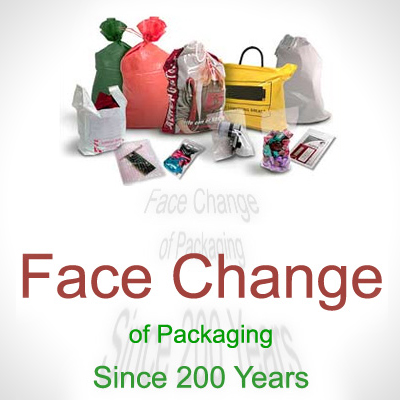Labeling Compliance in the Food and Beverage Industry: Navigating Regulations

Introduction
Labeling is a crucial aspect of the food and beverage industry. It serves as a bridge of communication between manufacturers and consumers, providing essential information about a product's ingredients, nutritional content, and safety. While labels may appear to be a simple part of packaging, they are governed by a complex web of regulations to ensure that consumers are well-informed and protected. In this article, we will explore the world of labeling compliance in the food and beverage industry, shedding light on the regulations that govern it and the challenges faced by manufacturers.
Understanding the Importance of Labeling
Labels are the primary means by which consumers gather information about a food or beverage product. From checking for allergens to examining nutritional content, consumers rely on labels to make informed choices. Proper labeling also plays a significant role in food safety and traceability. When done correctly, it can prevent health risks, allergen exposure, and even product recalls.
| Read More: What are the key packaging solutions that cater to B2B food and beverage clients? |
Types of Labeling in the Food and Beverage Industry
Nutrition Labels: One of the most familiar labels is the nutrition facts panel. This label provides information about serving sizes, calories, fat content, vitamins, minerals, and more. It helps consumers understand the nutritional value of the product they are about to consume.
Ingredient Labels: Ingredient labels list all the components used in the product, with the most prominent ingredients listed first. This is crucial for people with allergies or dietary restrictions.
Allergen Statements: If a product contains common allergens like peanuts, tree nuts, milk, soy, wheat, fish, or shellfish, it must be clearly stated on the label.
Country of Origin Labeling (COOL): It is an obligatory procedure in certain areas that mandates indicating the location where a product was either grown or manufactured. This serves to empower consumers to make well-informed choices about the origins of the food they purchase.
Health Claims: Some products carry health claims to promote their benefits, but these claims are tightly regulated to prevent misleading consumers.
Common Labeling Regulations
Nutritional Labeling: Nutritional facts must be provided, and labels should include serving size, calories, fat content, carbohydrates, protein, and various vitamins and minerals. These values must be based on standardized serving sizes, making it easier for consumers to compare products.
Allergen Declarations: Products containing any of the major allergens must declare this information on the label. This is crucial for individuals with allergies who must avoid specific ingredients.
| Also Read: The Impact of Smart Packaging Technologies on Food & Beverage Industry Growth |
Ingredient Declarations: Ingredient lists must be clear and specific. Generic terms like "flavorings" are discouraged. Manufacturers must list ingredients in descending order of quantity, helping consumers understand what the product contains most.
Label Language: It is imperative that labels are transparent and readily comprehensible, employing language that avoids misrepresentation. Additionally, labels should be presented in the official language of the country in which the product is being marketed.
Expiration Dates: Perishable items must carry "use by" or "best before" dates to inform consumers of product freshness.
Health Claims: Assertions such as "low in fat" or "a good source of calcium" must be substantiated by scientific evidence and adhere to predetermined criteria.
Organic Labeling: Products labeled as "organic" must meet strict guidelines regarding how they are grown, raised, and processed.
Challenges in Labeling Compliance
Meeting labeling regulations can be a complex and costly process for food and beverage manufacturers. Some of the key challenges include:
Evolving Regulations: Regulatory requirements frequently undergo changes, necessitating manufacturers to keep abreast of the latest updates to ensure ongoing compliance with their labels.
Small Packaging: Smaller product packages present a challenge in fitting all required information while maintaining legibility.
Global Markets: For companies exporting products, they must navigate various regulations in different countries, which can be overwhelming.
Allergen Control: Avoiding cross-contamination with allergens can be challenging, and labels must be accurate to protect allergic consumers.
Label Misinterpretation: Consumers may misunderstand labels, leading to misinformed choices, especially with complex nutritional information.
Costs: Complying with regulations can be expensive due to testing, redesigning labels, and potential product reformulation.
Navigating the Complex Terrain of Food Labeling Compliance
In addition to the challenges mentioned, food and beverage manufacturers face the increasing demand for sustainability and ethical practices in their labeling. Consumers today are not only interested in the nutritional content and safety of products but also in the environmental and social impact of their choices. This means that manufacturers must consider labeling related to fair trade, sustainability certifications, and eco-friendly packaging, all of which add layers of complexity to the already intricate world of labeling compliance.
As technology continues to advance, digital labeling and smart packaging are also emerging trends. These innovations offer exciting opportunities for more interactive and informative labels but come with their own set of regulatory considerations.
E-commerce's Impact on Labeling Compliance: Challenges and Solutions
Another pressing issue is the rise of e-commerce and online food sales, which brings unique labeling challenges. Ensuring that labels are visible and accurate in the digital realm is essential. This is especially important as consumers increasingly rely on online platforms for food purchases, making it crucial for manufacturers to adapt their labeling strategies to this new marketplace.
Furthermore, the food and beverage industry faces an ongoing struggle against counterfeiting and food fraud. Manufacturers must employ robust labeling techniques, including tamper-evident seals and traceability measures, to protect consumers from counterfeit or mislabeled products.
As technology evolves, the potential for blockchain and QR code integration for enhanced traceability and transparency is a promising avenue in labeling compliance. These advancements can help in building consumer trust and ensure the authenticity of food products.
In summary, as the food and beverage industry continues to innovate, adapt to evolving consumer preferences, and harness technological advancements, labeling compliance remains a critical component of both consumer safety and success in the market. Manufacturers must stay agile and informed to navigate these ever-changing regulations and consumer demands successfully.









